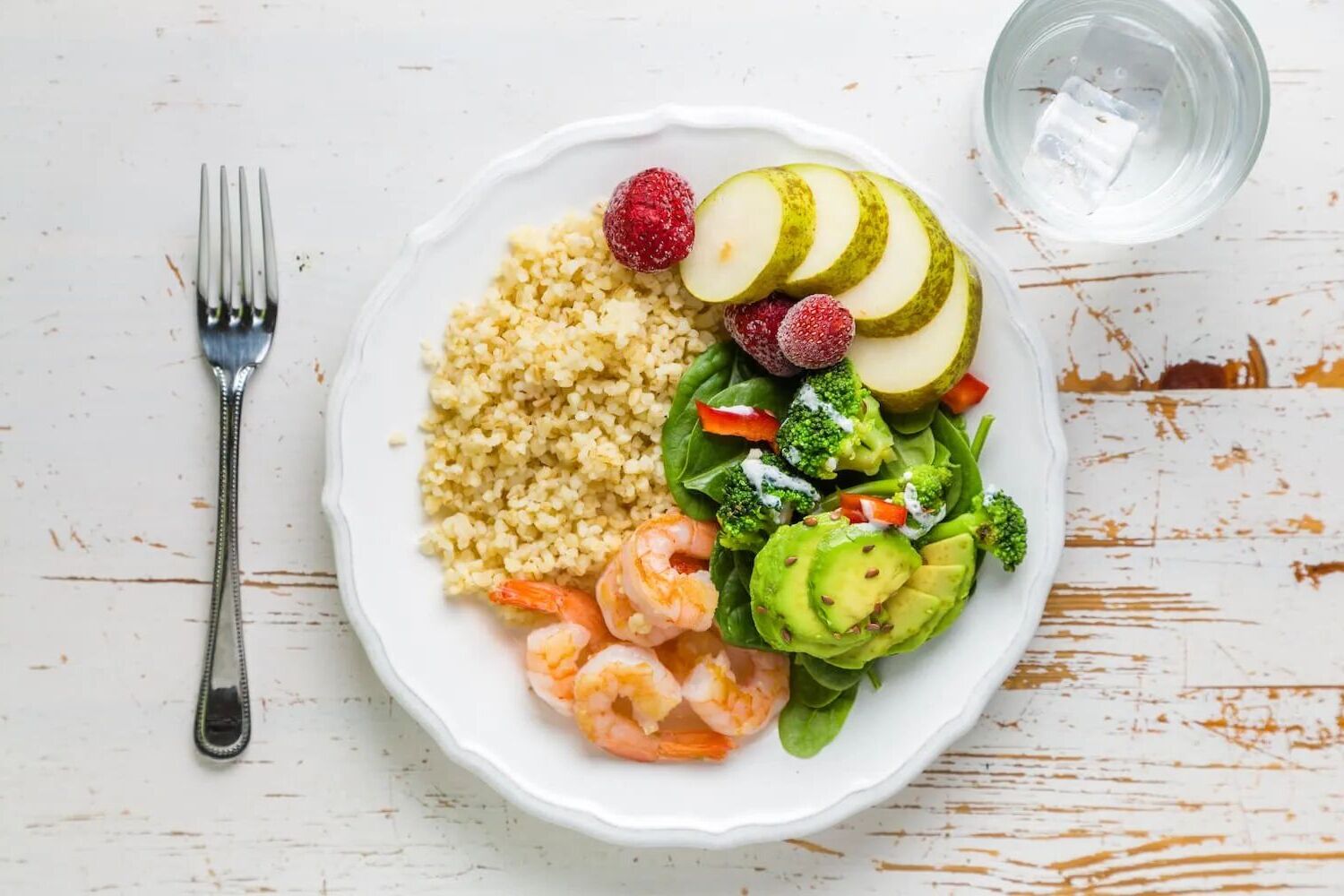
Portion control is a game-changer for anyone looking to maintain a healthy diet. But what exactly is it? Portion control means eating the right amount of food, not too much or too little. This practice helps manage weight, improve digestion, and boost overall health. Imagine eating your favorite foods without guilt, just by adjusting the portions. Sounds great, right? Understanding portion sizes can prevent overeating and make meals more satisfying. Whether you're dining out or cooking at home, mastering portion control can transform your eating habits. Ready to learn more? Let's dive into 26 facts that will help you become a portion control pro!
Key Takeaways:
- Portion control helps you manage how much you eat to stay healthy. Use smaller plates, measure portions, and avoid eating from packages to control your food intake and feel satisfied with less.
- Portion control is not about starving yourself, but about eating the right amount. It can help you maintain a healthy weight, improve digestion, and balance blood sugar levels. Practice mindful eating and use tools like portion control plates and food scales to manage your portions effectively.
Understanding Portion Control
Portion control is a key aspect of maintaining a healthy diet. It involves regulating the amount of food consumed to avoid overeating. Here are some interesting facts about portion control that can help you manage your diet better.
-
Portion Sizes Have Increased: Over the past few decades, portion sizes in restaurants and packaged foods have grown significantly. This increase contributes to higher calorie intake and weight gain.
-
Visual Cues Matter: People often rely on visual cues to determine how much to eat. Using smaller plates and bowls can trick the brain into feeling satisfied with less food.
-
Mindful Eating Helps: Paying attention to what you eat and savoring each bite can help you recognize when you're full, reducing the likelihood of overeating.
-
Pre-Portioning Snacks: Dividing snacks into individual portions can prevent mindless munching and help control calorie intake.
-
Restaurant Portions Are Large: Many restaurant meals contain more than a single serving, making it easy to overeat. Sharing dishes or taking leftovers home can help manage portion sizes.
Benefits of Portion Control
Practicing portion control offers numerous health benefits. It can aid in weight management, improve digestion, and enhance overall well-being.
-
Weight Management: Controlling portion sizes can help maintain a healthy weight by preventing overeating and reducing calorie intake.
-
Better Digestion: Eating smaller, more frequent meals can improve digestion and reduce the risk of gastrointestinal issues.
-
Balanced Blood Sugar Levels: Portion control can help keep blood sugar levels stable, which is especially important for individuals with diabetes.
-
Reduced Food Waste: By serving appropriate portions, you can minimize food waste and make more sustainable choices.
-
Improved Nutrient Absorption: Smaller portions can enhance nutrient absorption by allowing the body to process food more efficiently.
Tips for Practicing Portion Control
Implementing portion control can be easier with some practical tips. These strategies can help you manage your portions without feeling deprived.
-
Use Smaller Plates: Smaller plates can make portions appear larger, helping you feel satisfied with less food.
-
Measure Portions: Using measuring cups and spoons can ensure you're eating the right amount of food.
-
Read Labels: Pay attention to serving sizes on food labels to avoid consuming more than intended.
-
Avoid Eating from Packages: Eating directly from a package can lead to overeating. Portion out snacks into bowls or containers.
-
Fill Half Your Plate with Vegetables: Vegetables are low in calories and high in nutrients, making them a great choice for filling up your plate.
Common Misconceptions About Portion Control
There are several myths surrounding portion control that can lead to confusion. Let's debunk some of these misconceptions.
-
Healthy Foods Can't Be Overeaten: Even healthy foods can contribute to weight gain if consumed in large quantities. Portion control is important for all types of food.
-
Skipping Meals Helps: Skipping meals can lead to overeating later. It's better to eat smaller, balanced meals throughout the day.
-
Portion Control Means Starving: Portion control is about eating the right amount, not starving yourself. It's possible to feel satisfied with smaller portions.
-
All Calories Are Equal: The quality of calories matters. Nutrient-dense foods provide more benefits than empty-calorie foods.
-
Drinks Don't Count: Beverages can contain a lot of hidden calories. Practicing portion control with drinks is just as important as with food.
Tools and Techniques for Portion Control
Several tools and techniques can assist in managing portion sizes effectively. These can make portion control more manageable and less daunting.
-
Portion Control Plates: These plates have sections for different food groups, helping you balance your meals.
-
Food Scales: Weighing food can provide a more accurate measure of portion sizes.
-
Meal Prep Containers: Prepping meals in advance with portioned containers can help control serving sizes.
-
Mindful Eating Practices: Techniques like eating slowly and chewing thoroughly can help you recognize fullness cues.
-
Portion Control Apps: Various apps can track your food intake and help you stay within your portion limits.
-
Visual Comparisons: Using everyday objects, like a deck of cards for meat portions or a tennis ball for fruit, can help estimate serving sizes.
Mastering Portion Control
Mastering portion control can transform your health. It’s not just about eating less but eating smart. Smaller portions help manage weight, reduce overeating, and improve digestion. Use smaller plates, measure servings, and listen to your body’s hunger cues.
Remember, portion sizes have grown over the years, leading to larger waistlines. By being mindful of what and how much you eat, you can enjoy your favorite foods without guilt.
Eating out? Share meals or pack half to go. At home, avoid eating straight from the package. These small changes make a big difference.
Stay hydrated, as thirst is often mistaken for hunger. Incorporate more fruits, veggies, and lean proteins into your meals.
With these tips, you’re on your way to a healthier lifestyle. Keep practicing, and soon, portion control will become second nature.
Frequently Asked Questions
Was this page helpful?
Our commitment to delivering trustworthy and engaging content is at the heart of what we do. Each fact on our site is contributed by real users like you, bringing a wealth of diverse insights and information. To ensure the highest standards of accuracy and reliability, our dedicated editors meticulously review each submission. This process guarantees that the facts we share are not only fascinating but also credible. Trust in our commitment to quality and authenticity as you explore and learn with us.


